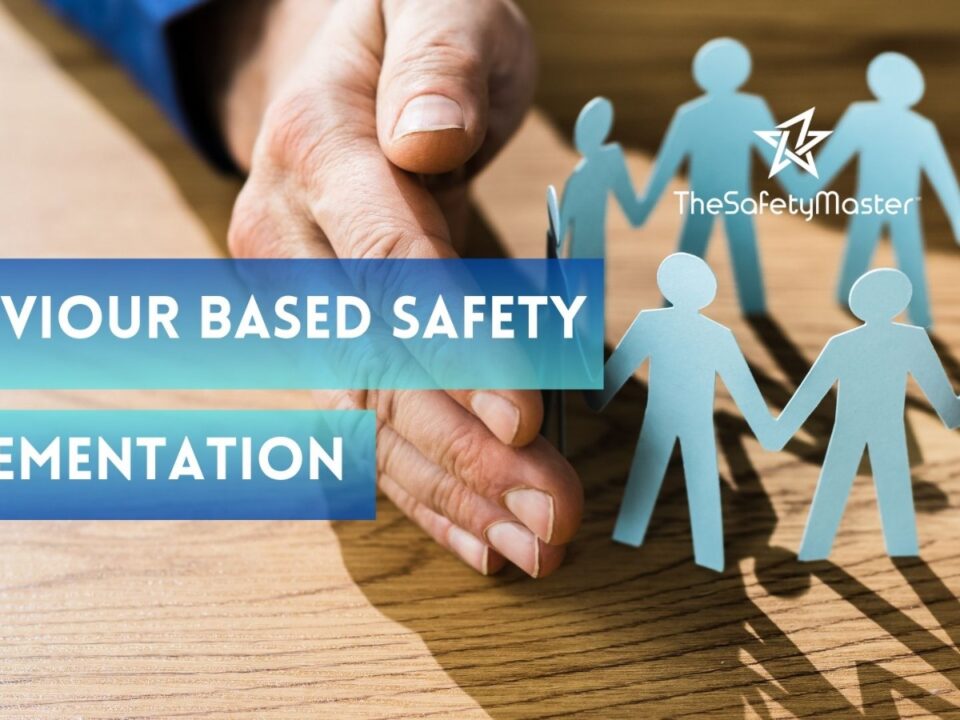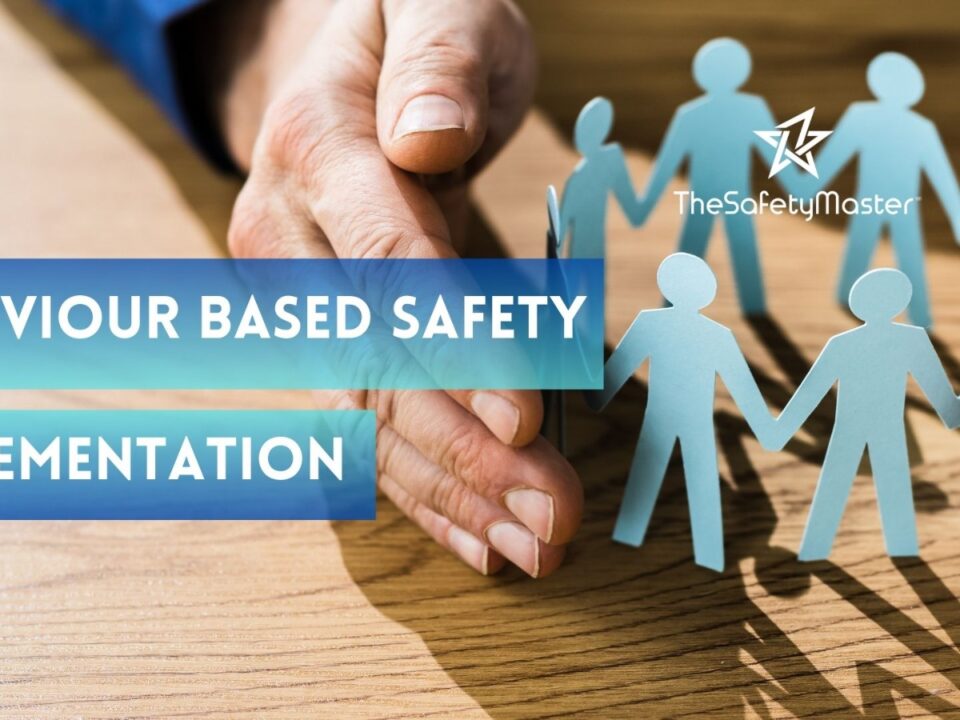Strengthening Safety Measures: Understanding the Importance of Following BIS14489 Safety Audit Guidelines in Indian Industries
Comprehensive Electric Vehicle Manufacturing Facilities Safety Auditing
October 16, 2023
Chlorine Storage and Handling: Protecting Lives and the Environment in Indian Process Industries
October 17, 2023In this article, we will delve into a critical issue that Indian industries must address promptly: the significance of adhering to BIS14489 Safety Audit Guidelines. Ensuring the safety and well-being of employees should be a top priority for every organization, regardless of the sector. By exploring the key components of these guidelines, we aim to raise awareness about the potential risks and highlight the vital role they play in strengthening safety measures within the Indian industrial landscape. Prepare to discover valuable insights, actionable recommendations, and a promise of enhanced safety that organizations and employees alike truly desire. Read on to learn how following these guidelines can empower Indian industries to create a safer working environment.
Introduction
In the realm of industrial safety, adherence to guidelines and protocols plays a pivotal role in safeguarding the well-being of employees and ensuring smooth operations. However, in Indian industries, there has been a pressing need to strengthen safety measures and improve compliance with established standards. This article aims to explore the importance of following BIS14489 Safety Audit Guidelines in Indian industries as a means of fortifying safety measures and fostering a secure work environment. As we delve deeper into this topic, we will uncover the key components of these guidelines and understand how they contribute to minimizing workplace hazards. By examining the significance of employee training, implementing effective safety management systems, conducting regular audits, identifying potential hazards, enhancing emergency preparedness, and emphasizing leadership’s role, we will gain valuable insights into bolstering safety measures across various industries
Understanding BIS14489 Safety Audit Guidelines: An Overview
An Overview: Understanding BIS14489 Safety Audit GuidelinesBIS14489 Safety Audit Guidelines, established by the Bureau of Indian Standards, serve as a crucial benchmark for ensuring safety in Indian industries. These comprehensive guidelines encompass a wide range of factors, including risk assessment, emergency preparedness, and employee training. By adhering to these guidelines, organizations can create a safe and secure working environment for their employees while mitigating potential hazards.
At its core, BIS14489 aims to foster a culture of safety and accountability within Indian industries. It encourages organizations to have robust safety management systems in place that prioritize prevention and response strategies. By complying with these guidelines, companies can establish a solid foundation for reducing accidents and promoting the well-being of their workforce.
Adhering to BIS14489 Safety Audit Guidelines not only enhances workplace safety but also has several positive ripple effects. Increased safety measures lead to higher employee morale and productivity. Furthermore, organizations that prioritize the well-being of their employees are more likely to attract and retain top talent. Ultimately, by embracing these guidelines wholeheartedly, Indian industries can pave the way towards a brighter future where workplaces are seen as sanctuaries of security rather than arenas of potential harm.
The Significance of Safety Measures in Indian Industries
The Significance of Safety Measures in Indian Industries: In the vast landscape of Indian industries, safety measures play a paramount role in ensuring the well-being of workers and protecting valuable assets. With a diverse array of sectors ranging from manufacturing to construction, each industry presents its own unique set of hazards. However, the significance of safety measures remains constant across all sectors.
Indian industries have made substantial progress in recent years, recognizing that prioritizing safety not only safeguards human lives but also enhances productivity. By adhering to stringent safety protocols, businesses can create an environment where employees feel secure and motivated to perform at their best. Moreover, implementing robust safety measures fosters trust among stakeholders and reinforces a positive image for the company in the eyes of clients and investors.
However, it is crucial to acknowledge that safety is not just about complying with regulations; rather, it involves taking proactive steps to anticipate potential risks and implement preventive measures accordingly. By investing in state-of-the-art equipment, promoting regular training programs, and cultivating a culture of awareness and responsibility among employees, Indian industries can truly embody the spirit of progress while ensuring the welfare of everyone involved.
Remembering that no success is worthwhile if achieved at the expense of human lives or natural resources, let us embrace this opportunity to delve deeper into understanding BIS14489 Safety Audit Guidelines – guidelines that promise to strengthen safety measures within Indian industries and pave the way for a brighter future for all stakeholders involved.
Key Components of BIS14489 Safety Audit Guidelines
Key Components of BIS14489 Safety Audit Guidelines: The BIS14489 Safety Audit Guidelines consist of several key components that play a crucial role in ensuring the safety and well-being of employees in Indian industries. These guidelines encompass a comprehensive framework aimed at identifying, assessing, and mitigating potential hazards within the workplace.
One important component is the evaluation of safety policies and procedures. This involves a thorough examination of existing safety protocols to ensure they align with national standards and best practices. It emphasizes the need for clear and concise policies that are communicated effectively to all employees.
Another component focuses on risk assessment and management. It entails identifying potential hazards within the workplace, evaluating their magnitude and likelihood, and implementing measures to control or eliminate them. This proactive approach promotes a safe working environment where risks are minimized, thereby safeguarding both employees and company assets.
Furthermore, the guidelines emphasize the importance of maintaining proper documentation related to safety measures. Documenting incidents, near-misses, training sessions, audits, and corrective actions allows for better analysis and continuous improvement in safety protocols. Documentation also helps in tracking compliance with regulatory requirements.
By incorporating these key components into their operations, Indian industries can enhance their overall safety culture. Adhering to these guidelines not only protects employees from harm but also fosters an environment where individuals feel valued and well-cared for by their employers. The implementation of these components helps create a positive work atmosphere that promotes productivity while prioritizing employee welfare
Importance of Employee Training in Ensuring Safety Compliance
The Importance of Employee Training in Ensuring Safety Compliance: In any industry, employees are the backbone of operations, and their safety is paramount. Ensuring that employees are well-trained in safety protocols is crucial for maintaining a secure working environment. By investing in comprehensive training programs, companies can empower their workforce with the knowledge and skills needed to identify potential hazards and respond effectively.
Employee training serves as a proactive measure, equipping individuals with the necessary tools to mitigate risks before they escalate. Through interactive sessions and practical exercises, personnel can develop a heightened sense of awareness when it comes to workplace safety. By understanding the importance of following BIS14489 Safety Audit Guidelines, employees become active participants in creating a culture of safety within their organizations.
Moreover, effective training not only reduces accidents and injuries but also improves overall productivity. When employees feel confident in their abilities to handle emergencies or address potential hazards appropriately, they can focus on their tasks without unnecessary distractions or fear. This sense of security fosters an optimistic work environment where individuals thrive and contribute positively to the success of the company. Ultimately, investing in employee training ensures compliance with safety guidelines while promoting a culture that prioritizes the well-being of its workforce.
Implementing Effective Safety Management Systems
Implementing Effective Safety Management Systems in order to ensure the highest level of safety in Indian industries, the implementation of effective safety management systems is of paramount importance. These systems provide a framework for identifying potential hazards, establishing safety protocols, and monitoring compliance within the organization. By adopting such systems, companies can create a culture where safety becomes an integral part of daily operations.
One key aspect of implementing effective safety management systems is conducting thorough risk assessments. This involves identifying all potential hazards in the workplace and evaluating their likelihood and severity. By understanding these risks, companies can develop targeted strategies to mitigate them effectively. Additionally, integrating regular inspections and maintenance programs into the safety management system helps identify any equipment or infrastructure issues that could compromise workplace safety.
Furthermore, developing comprehensive training programs plays a vital role in ensuring workforce competence and awareness regarding safety measures. These programs should cover areas such as emergency response procedures, proper use of personal protective equipment (PPE), and safe handling practices for hazardous materials. By equipping employees with the necessary knowledge and skills to prioritize their own safety as well as that of their colleagues, organizations foster a positive safety culture where everyone feels empowered to actively contribute to accident prevention.
Implementing effective safety management systems not only reduces the risk of accidents but also boosts employee morale and productivity. When workers feel confident that their employers prioritize their well-being, they are more likely to be motivated and engaged in their work. Moreover, a track record of strong commitment to workplace safety enhances an organization’s reputation among stakeholders – customers, investors, and regulators alike – leading to increased trust and long-term success
Conducting Regular Safety Audits: Best Practices
Conducting Regular Safety Audits: Best Practices – A safety audit is a critical tool in ensuring workplace safety and compliance with BIS14489 guidelines. To conduct an effective safety audit, it is essential to follow best practices that encompass meticulous planning, comprehensive evaluation, and timely corrective actions. It begins with establishing clear objectives and assembling a competent audit team comprising individuals well-versed in safety protocols.
During the audit process, meticulous documentation becomes paramount. Detailed records of observations, findings, and recommendations enable a thorough analysis of the current safety measures. This information serves as a valuable reference for future audits and allows for continuous improvement in safety standards.
Furthermore, regular communication with employees at every stage of the audit fosters transparency and empowers them to become active participants in the improvement process. By involving workers in identifying potential hazards or suggesting safer practices, a culture of collective responsibility for workplace safety can be fostered. Ultimately, conducting regular safety audits not only ensures compliance but also enhances overall employee morale and productivity.
Identifying and Mitigating Potential Hazards in the Workplace
The safety and well-being of employees in any workplace is of utmost importance. Identifying and mitigating potential hazards in the workplace plays a vital role in creating a safe working environment. By proactively identifying and addressing risks, organizations can prevent accidents, injuries, and even loss of life. One way to identify hazards is through conducting comprehensive risk assessments across all areas of the workplace. This involves closely examining each department, machinery, equipment, and processes to identify any potential sources of harm. By meticulously assessing every aspect, organizations can effectively pinpoint potential hazards that might otherwise go unnoticed.
Once identified, appropriate measures should be taken to mitigate these hazards. This can involve implementing engineering controls such as installing safety guards on machinery or providing personal protective equipment (PPE) for employees working in hazardous conditions. Moreover, thorough training programs should be conducted to ensure that employees understand how to recognize and handle potential dangers in their daily tasks.
By promptly identifying and eliminating or minimizing workplace hazards, organizations demonstrate their commitment towards employee safety while fostering a positive work culture. Taking proactive steps not only prevents accidents but also instills confidence among employees that their well-being is valued. Ultimately, building a hazard-free workplace leads to increased productivity and job satisfaction for all involved stakeholders.
Enhancing Emergency Preparedness: Crisis Management Protocols
Enhancing Emergency Preparedness: Crisis Management Protocols- During times of crisis, having well-defined crisis management protocols in place is crucial to ensure the safety and well-being of employees in Indian industries. The implementation of such protocols not only helps prevent emergencies but also enables swift and effective responses in the face of unforeseen events.
One key aspect of enhancing emergency preparedness is establishing clear communication channels. This includes setting up a reliable system for disseminating information, providing real-time updates, and ensuring that all employees are aware of emergency procedures and contact points.
Furthermore, conducting regular emergency drills can significantly improve response times and enhance overall readiness. By simulating different crisis scenarios, organizations can identify potential gaps in their plans, train employees on proper procedures, and fine-tune their crisis management protocols. Such drills provide invaluable opportunities for learning from past experiences while fostering a culture of preparedness within the workforce.
Remember that by investing time and effort into developing robust crisis management protocols, Indian industries demonstrate their commitment to the safety and security of their employees. Ultimately, an organization’s proactive approach to emergency preparedness serves as a comforting reassurance for both its workforce and stakeholders alike.
Role of Leadership in Strengthening Safety Measures
Leadership plays a pivotal role in strengthening safety measures within Indian industries. As the driving force behind organizational culture and behavior, leaders have the power to inspire and instill a strong safety consciousness among employees. By setting a positive example through their own adherence to safety protocols, leaders create an environment where safety is valued and prioritized by all. Effective leaders go beyond mere compliance with safety guidelines; they actively promote a proactive approach to risk management. They encourage open communication channels where employees feel comfortable reporting hazards and near-miss incidents without fear of reprisal. By fostering trust and cultivating a culture of continuous improvement, leaders empower their teams to identify potential risks and suggest innovative solutions.
Furthermore, leaders play a crucial role in ensuring that adequate resources are allocated towards safety initiatives. They understand that investing in training programs, state-of-the-art equipment, and robust emergency response systems not only safeguards employees but also enhances productivity and profitability. By championing safety as an integral part of business operations, leaders create an optimistic work environment where employees can thrive both personally and professionally while feeling secure in their well-being.
In conclusion, leadership holds the key to instilling a strong commitment to safety within Indian industries. Through their actions, words, and resource allocation decisions, effective leaders inspire their teams towards excellence in risk management. By fostering a culture of open communication, trust building, and continuous improvement, these leaders create workplaces that are not only safe but also empowering for all stakeholders involved.
Benefits of Following BIS14489 Safety Audit Guidelines in Indian Industries
The Benefits of Following BIS14489 Safety Audit Guidelines in Indian Industries: Adhering to the BIS14489 Safety Audit Guidelines in Indian industries yields numerous advantages. Firstly, it ensures a safer work environment for employees, reducing the risk of accidents and injuries. By implementing these guidelines, companies demonstrate their commitment to prioritizing the well-being of their workforce, fostering a culture of trust and loyalty.
Additionally, following these guidelines helps organizations avoid legal complications and penalties. Compliance with safety regulations showcases a company’s ethical responsibility towards its employees and society as a whole. By upholding these standards, businesses gain credibility and enhance their reputation in the market, attracting potential investors and customers who value safety-conscious organizations.
Moreover, adherence to BIS14489 Safety Audit Guidelines leads to increased operational efficiency. Implementing robust safety management systems minimizes downtime caused by accidents or disruptions in workflow. A well-organized workplace with established safety protocols fosters productivity by allowing employees to focus on their tasks without undue concern for their well-being.
In summary, embracing the BIS14489 Safety Audit Guidelines brings numerous benefits ranging from improved employee morale and legal compliance to enhanced productivity and reputation. By investing in safety measures, Indian industries can pave the way for success while ensuring the holistic well-being of their workforce.
Conclusion
The safety and well-being of employees should always be a top priority for Indian industries. By diligently following the BIS14489 Safety Audit Guidelines, companies can ensure a robust safety management system that mitigates risks and protects workers from potential hazards. Implementing these guidelines not only fosters a culture of safety but also enhances productivity and overall business performance. As organizations embrace these principles, they pave the way for a brighter future where every worker can thrive in a safe and secure environment. Let us embark on this journey towards safer workplaces, knowing that our collective commitment to following safety audit guidelines will lead to a prosperous and harmonious industrial landscape in India.




